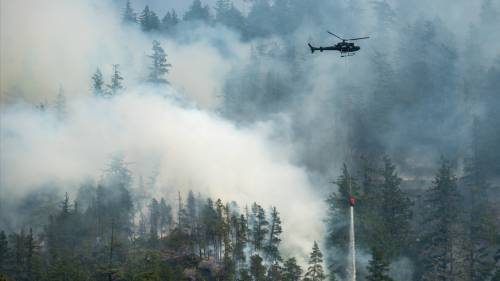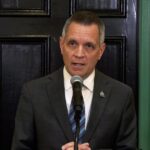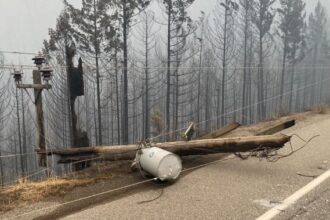The acrid haze that blanketed American cities last summer has sparked diplomatic tensions, as U.S. lawmakers are now formally pressing Canada for more aggressive action on wildfire prevention and management. Representatives from states that suffered under dense Canadian smoke plumes are demanding cross-border cooperation before another potentially devastating fire season arrives.
“When Canadian smoke turns our skies orange and sends our air quality index into hazardous territory, it becomes more than just Canada’s problem,” said Rep. Jennifer McClain from New York, whose constituents endured weeks of smoky conditions last summer. “We’re literally breathing the consequences of insufficient wildfire management.”
The congressional delegation, comprising representatives from northeastern and midwestern states, sent a formal letter to Canadian officials this week outlining specific concerns about wildfire prevention strategies and early response capabilities. Their primary request centers on establishing a joint U.S.-Canadian task force dedicated to coordinating fire management resources and developing preventative measures in high-risk forest regions.
Climate scientists have warned that the unprecedented scale of Canadian wildfires in 2023 – which burned over 45 million acres of forest and sent smoke thousands of kilometers south – may become the new normal without intervention. Environment Canada data indicates that average temperatures in Canada’s boreal forest regions have increased at nearly twice the global rate, creating tinderbox conditions.
“We respect Canadian sovereignty, but we also need to protect American public health,” said Rep. Thomas Hendricks from Michigan. “Last year, emergency room visits for respiratory issues increased 30% in Detroit during peak smoke days. Schools canceled outdoor activities, and vulnerable populations were essentially trapped indoors.”
Canadian Minister of Natural Resources Marie Rousseau acknowledged the concerns but emphasized that Canada already dedicates significant resources to wildfire management. “We invested an additional $256 million in our National Wildfire Strategy last year,” Rousseau stated. “However, the reality is that climate change is transforming our forests faster than we can adapt our response systems.”
The economic impact extends beyond health concerns. Tourism dropped approximately 15% in affected U.S. regions during smoke events, and outdoor-dependent businesses reported losses exceeding $400 million, according to preliminary studies from the Northeast Economic Research Council.
The congressional letter specifically requests that Canada enhance early detection technologies, increase the number of trained firefighting personnel, and implement more aggressive forest management practices, including controlled burns during safer seasons.
Environmental experts note that both countries face similar challenges with wildfire management. “Neither country can solve this independently,” said Dr. Elena Vasquez, environmental policy researcher at Columbia University. “Climate change doesn’t respect borders, and neither does smoke. This requires multinational cooperation on both mitigation and adaptation strategies.”
Canadian officials have invited the U.S. delegation to participate in upcoming wildfire preparedness meetings scheduled for May, ahead of what meteorologists predict could be another intense fire season. With spring precipitation levels already below average across much of western and central Canada, the stage may be set for another summer of smoke.
As communities on both sides of the border prepare for potential air quality emergencies, the question remains: Will this diplomatic pressure translate into meaningful action, or are we destined to witness increasingly severe transboundary pollution as North American forests continue to burn at historic rates?

























